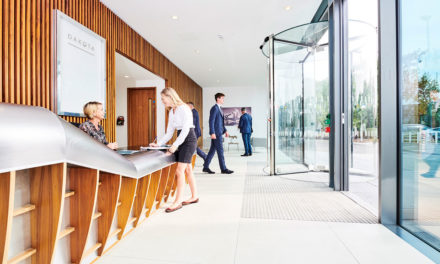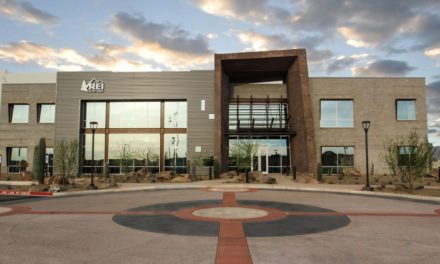Video created using GoPro Odyssey on Google Jump
10/23/17—The American Society of Landscape Architects (ASLA) has released a new, exciting VR video of Klyde Warren Park in Dallas, a project that bridges a highway and reunites a part of Dallas. The video is intended to entice viewers into taking a vivid journey through this park built over a highway. It is narrated by landscape architect James Burnett, FASLA, president of OJB Landscape Architecture, which designed the park.
Created using GoPro Odyssey on Google Jump, this video demonstrates the latest VR cinematic technology. It takes viewers into the heart of the park to explore its unique design features.
The video was launched at the ASLA 2017 Annual Meeting and EXPO, October 21-22, and is available for free viewing on ASLA’s website.
ASLA selected the park as the video’s focus because it won the ASLA 2017 Professional Award of Excellence. Less than one percent of hundreds of award submissions receive this honor. The ASLA jury, made up of leaders in the field, described Klyde Warren Park this way: “It has totally re-energized the downtown core. People are moving in; it’s great for business; it’s open 24 hours a day.”
The award also highlights the park because it’s a prominent example of how to heal the damage made by transportation infrastructure to our downtowns. Capping highways, freeways, or wide avenues with green space closes the “gashes in our landscape,” as Burnett explains in his narration, helping bring communities back together. More than one million people a year now visit the park, making it one of Dallas’ most popular spaces. In this regard, Dallas shows the way forward for the rest of the world’s cities.
ASLA is always looking for ways to promote the value of landscape architecture to society. Virtual reality has proven to be a powerful tool for showing how the places people love—like Klyde Warren Park—are designed experiences. The video effectively explains the incredible value of landscape architecture to the public and the ability of landscape architects to turn a detraction into a beloved community park.
Community groups and local advocates are invited to make use of this video for their own goals. Communities can come together to build the case for covering freeways and re-connecting to their neighbors and nature and then raise the funds to make it happen. As Burnett explains, the park was built with a combination of public and private funds and is now 100 percent maintained by a nonprofit.
Viewing Options
Option 1: Watch a 360 Video on YouTube
If you are on your phone reading this page, simply click on this URL and watch it in your YouTube mobile app: https://youtu.be/DEohYK5a3-c (please note that this video will not work in your mobile browser)
Be sure to turn around while watching so you can see all angles of the park!
Or if you are on a desktop computer, go to https://youtu.be/DEohYK5a3-c using your Chrome browser. Use the sphere icon to navigate through the park.
Option 2: Watch a 3D 360 Video on Samsung Gear VR
If you own a Samsung Gear VR headset and compatible Samsung phone, go to Samsung Gear via the Oculus App and search for “Klyde Warren Park” or “ASLA” to find our video.
ASLA VR Credits
Producer: American Society of Landscape Architects (ASLA)
Production Company: DimensionGate, Toronto
Director: Ian Tuason
Director of Photography: Ryan Swift Joyner
Narrator: James Burnett, FASLA, president, OJB Landscape Architecture
Post Production: Ryan Swift Joyner
About ASLA
Founded in 1899, the American Society of Landscape Architects (ASLA) is the professional association for landscape architects in the United States, representing more than 15,000 members. The Society’s mission is to advance landscape architecture through advocacy, communication, education and fellowship. Sustainability has been part of ASLA’s mission since its founding and is an overarching value that informs all of the Society’s programs and operations. ASLA has been a leader in demonstrating the benefits of green infrastructure and resilient development practices through the creation of its own green roof, co-development of the SITES® Rating System and the creation of publicly accessible sustainable design resources.



